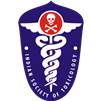Toxic outcomes of fatal Oduvan poisoning in South India: An autopsy-based study.
Keywords:
Oduvan; Cleistanthus collinus; Cleistanthin; hemorrhage; acute tubular necrosis; hepatic necrosisAbstract
Background: the Oduvan is Cleistanthus collinus having two major active principles Cleistanthin a and B. There are growing numbers of self-harm by consuming Oduvan in Southern region of India. The mechanism of action of Oduvan and its active principles in humans are not well established. Limited literatures available on the microscopic end-organ damage caused by the Oduvan toxicity in human beings.
Aim: This study was carried out to assess the histopathological and autopsy features of liver, kidney, and lungs in fatal Oduvan poisoning cases.
Methods: The anonymous data regarding the autopsy, clinical records, and histopathology findings of fatal Oduvan poisoning cases reported during the period January 2014 to December 2016 was collected and analysed using Epidata V.2.0 program.
Results: a total six number of cases was reported during the study period. The common findings in lungs were intra-alveolar hemorrhage, pulmonary edema, and septal congestion. The findings in kidney were acute tubular necrosis and medullary congestion. The findings in liver were intra canicular and intra hepatic cholestasis, focal feathery changes, and necrosis. The toxicological analysis of viscera was positive for only one case and rest five cases were negative.
Conclusion: The acute tubular necrosis, hepatic necrosis and intra alveolar hemorrhages were the common findings in this study and caused the death in majority of cases. Intra alveolar hemorrhages usually showed a late manifestation beyond 72 hours of hospitalization. Most of the findings are consistent with animal studies except the intra alveolar hemorrhages.



